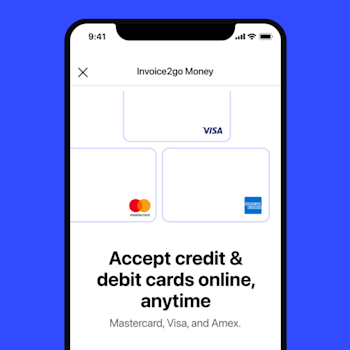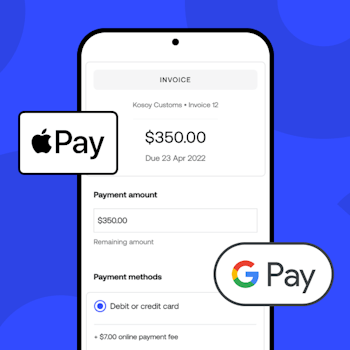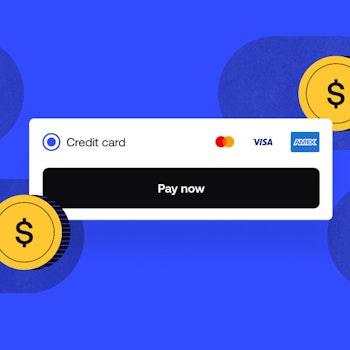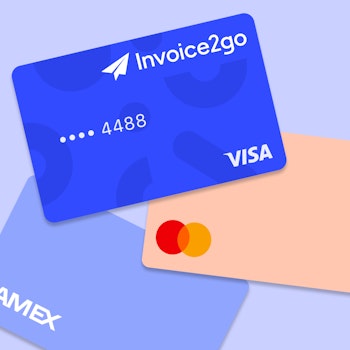
3 simple steps to turn more estimates into sales in 2021
If you don’t have a clear follow-up strategy for pending estimates, you need one.
Does this scenario sound familiar? You connected with a prospect, had a great chat about working together, and you took the time to put together an estimate about the anticipated cost and timeline. You’re feeling excited about this new opportunity and growing your business. . .
. . . but then days go by and you don’t hear back.
You’re busy running your business and time keeps passing. Maybe you question if it’s too soon to follow up with a client. Will you bug them and turn them off? Or does it seem like it’s been too long and you’re worried they’ve forgotten about you?
No matter what industry you work in, converting prospects into paying customers is one of the biggest challenges that all small businesses and independent professionals face. At Invoice2go, a Bill.com company, it’s our mission to help you streamline running your business so you can spend more time doing what matters most.
We’re excited to release our new overview section and menu that helps you more easily track pending estimates and other essential business information. This feature can play a crucial role in developing a follow-up strategy that enables you to expand your customer base and convert more prospects into paying customers.
However, no matter what software or system you use, it’s essential that your business develops an effective sales system. Here are 3 simple tips to help you close more sales from pending estimates:
1. Understand why you need a follow-up system to close sales
Sometimes the stars align. A customer reaches out to you, loves your work, and immediately reaches into their wallet to pay you for your services. All you have to do is do your job and count the ever-growing 0s in your bank account. . .
… However, for most businesses, this isn’t the norm.
Research shows that it takes, on average, 5 follow-ups to close a sale with a customer. In other words, you will need to establish a relationship and communicate with them several times before you make them a paying customer.
Of course, the number of follow-ups you need to do depends on your industry, reputation, and other factors. Still, the essential point to take home is that if you’re not doing consistent, thoughtful follow-ups with your customers, you’re missing out on sales.
Following up about estimates doesn’t mean bugging customers or hard-selling your services – that will undoubtedly hurt your business. It means enhancing your communication, establishing trust, then having your customers agree to work with you when they’re ready.
2. Make sure you send clear, detailed estimates to your customers
Part of what makes it easier to close sales is having a superb estimate with all the essential information your customer needs. Here are some tips to make sure your estimates stand out and move your prospects to take action:
Appearance
Make sure your estimate looks professional. If you write it on paper or just send a few notes in an email, it doesn’t have the same impact as a professional document. For example, if you use Invoice2go, you can create custom estimates that include your logo and enable you to easily create fields to add all the information about the project. You can also instantly turn your estimate into an invoice once your customer approves it.
Timeline
The more specific and transparent you can be with your customers, the better. Check your calendar and give your customer the exact dates you plan to complete the project. Depending on the type of work you do, tell your customer the specific days you will be working for them.
For larger projects, break it down and share the dates you will complete certain aspects of the work. This keeps you accountable and sets clear expectations with your customer.
Budget
While it may feel uncomfortable, you need to be upfront about the project’s total anticipated cost. Whether you charge a flat fee or hourly rate, you need to break down how much your customer can expect to pay. If there are costs for materials or other expenses, list them here.
If you’re unsure how to set up a budget for your customers, research others in your industry, talk to a mentor, or check-in with one of our communities. Also, don’t undercharge yourself with the hopes of winning the sale – this often leads to both you and your client being frustrated. Know your worth and charge fairly.
Social proof
While you may not include this in your estimate document, it can help to share reviews from other customers and images of recently completed projects. You can add a link to your website or directly share this information with your prospect via email or social media.
3. Create a follow-up schedule for pending estimates
You’ve sent off a winning estimate using the tips above – now what? The essential takeaway here is to communicate with your customers about precisely when you’ll follow up and how.
Check out this recent masterclass we released about winning more sales. While the content focuses on the construction industry, the lessons here about following up can be applied to any business.
Set specific times
Understand that not everyone will be ready right away. If a customer says they need time to think about your proposal, set a specific time to reconvene. For example, you could say something like, “No problem. Is it ok if I check with you next Tuesday at 2 pm?”
A common mistake many freelancers and small business owners make is that they leave follow-up times vague. By always setting specific timelines, you establish more explicit expectations and improve your odds of winning new business.
Make it as personal as possible
As a result of COVID-19, there have been changes in the expectations of how people communicate. While it may not be possible to meet in person, many are more open to meeting via Zoom or other online platforms. Discuss with your prospects what’s the best way to communicate.
Also, note that while email or text message may be fast and convenient, they’re also the least personal. If possible, consider scheduling video or phone calls to establish greater rapport and to ensure nothing slips through the cracks as you plan the project.
Follow up when you say you will
While a quick follow-up may sound simple, it can be hard to do this in an organized way when you’re busy running a business. Therefore, you need to create a calendar system that you can stick to.
Some businesses do Follow-up Friday – a day when they go through all their pending estimates and reach out to those customers. With the new Invoice2go feature, you’ll be able to quickly view the estimates you’ve yet to close.
Alternatively, you can calendar a time that you and your prospect agree up. If you’re an Invoice2go subscriber, you can add this information directly into your app. Or you set up a system with Google Calendar or another platform.
If a customer tells you they still need time to think when you follow up, be sure to set the next time to connect and make a note to reach out again at the time you agree up. Continue doing this with any prospect until you get a definitive no.
We hope these simple tips help you get started in creating a more effective sales system for your business. It’s our mission at Invoice2go to amplify the independent voices of small business owners worldwide – and we’re continually developing new features to help your business grow and thrive.
Click here to check out the new overview section and menu. See how easy it is to review all your pending invoices and start taking action.
Related Articles

How to accept credit card payments on Invoice2go in 3 simple steps

Accept payments online via Apple Pay and Google Pay

Must-not-miss write-offs as you wrap up 2022 year-end finances

5 ways accepting credit and debit card payments helps your business stay resilient

4 easy ways to increase cash flow today

What is Small Business Saturday and why is it important?
The features and surprising benefits of a well-designed packing slip
